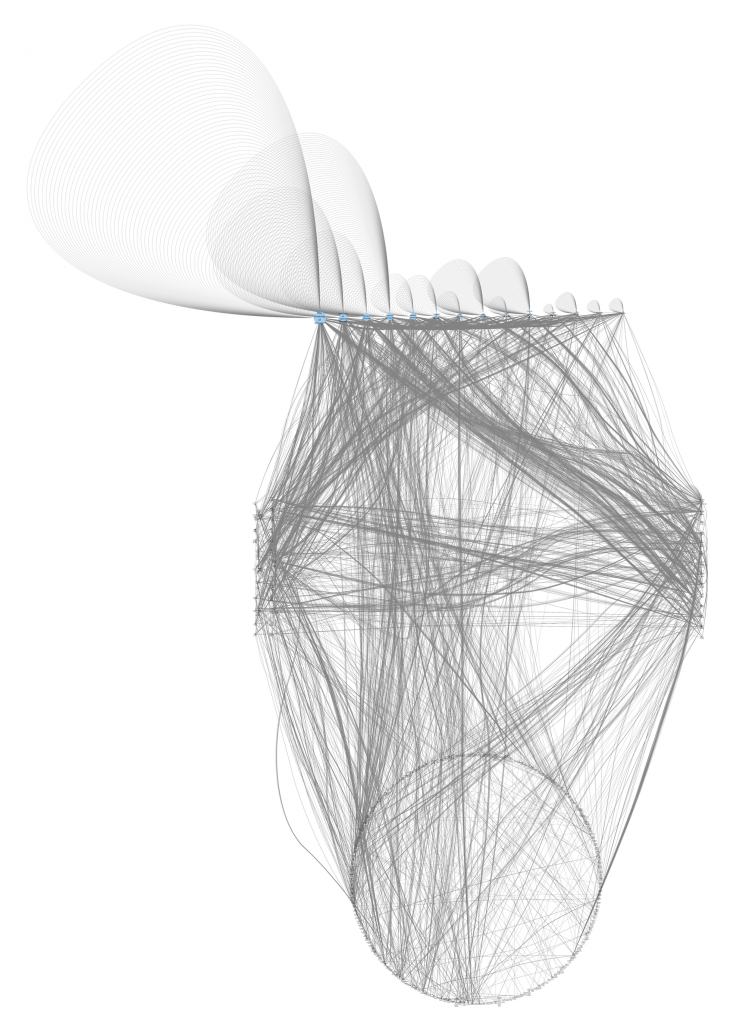Update (2022/2/14): Prompted by a question on Twitter, I went back to my data and re-discovered that in 2020 I had updated my data to include dissertations up to 2017, and had put it through an additional round of cleaning through OpenRefine. This shows that John Comaroff is actually ranked 7th in term of dissertations supervised, rather than 3rd as my original post said. I’ve included an amendment below, but otherwise the post is unchanged.
Recent events have raised perennial questions about academic authority and institutional power in anthropology. There are persuasive allegations about more than one famous anthropologist—most recently, John Comaroff—at a powerful institution behaving very badly.
One aspect that may be very difficult for outsiders to anthropology to appreciate, but which is also felt more than known by people within the discipline, is the extent of the influence that these scholars have over the field. Junior scholars were fearful that their future careers were at risk if they spoke up against their famous supervisors. What were they fearful of?
Prompted by a question by Zoe Todd on Twitter, I’ve gone back to an old project where I mapped the networks of citations and doctoral supervisor-student relationships in cultural anthropology.
While my data cannot show who supervised who too far into the past, it does show who of the recent past can exercise a tremendous amount of influence. The data also shows who all of these scholars’ students were, but I’ve decided not to list the students’ names.
The selection of data presented below shows how central to anthropology some of these scholars are.
(This article in American Anthropologist does similar analyses with different data.)
Doctoral Supervisor-Student Connections
Using metadata from Ph.D. dissertations indexed by ProQuest, I extracted the names of dissertation authors and listed supervisors, and used them to produce a map of supervisory relationships. (Note that Proquest’s data is only good for this information from the 1980s, and focuses mostly on US universities. I don’t think any major European universities are represented. As far as I know, the data I have is complete up to about 2016.)
The entire dataset consists of thousands of names and connections. The next image shows some of the most central nodes in the network. Here, “central” means those names with the greatest number of outgoing connections: supervisors who supervised the greatest number of students. These nodes are the largest.

A portion of a network image showing doctoral supervisor and student relationships in cultural anthropology.
You’ll be able to discern the names Jean Comaroff and John Comaroff. In terms of the number of students they supervised (or at least were listed as supervisors for), they rank 1st and 3rd respectively across all of the indexed cultural anthropology dissertations.
This corresponds to 40 students supervised for John Comaroff and 65 for Jean. For comparison, Stevan Harrell (2nd place) has 41, George Marcus is tied for 3rd at 40, and John Kelly is 5th with 39. The vast majority of PhD theses writers have no students who have produced anthropology dissertations, and most have only 1 or 2, though this data does not catch people who supervise students outside of cultural anthropology.
The numbers shouldn’t be treated as exact, because the data is quite dirty. Nevertheless, it’s clear that John Comaroff is among the most prolific of doctoral supervisors in the US.
(Added: 2022/2/14)
Using slightly newer and cleaner data from 2020 that I rediscovered on my computer, I’ve arrived at slightly different rankings. John Comaroff has 38 supervisions rather than 40, and is ranked 7th between John Kelly and Michael Silverstein, rather than 3rd, as I originally wrote above. I don’t know the exact reasons for the difference, but it’s likely to be due to the removal of duplicate entries when I cleaned the data in 2020, and to changes in the script I used to extract the data, which I believe originally introduced some errors. The graphic below shows the top 30 from my revised data. (Confusingly, the information on institutions I discuss in the next section was created from the revised 2020 data.)

Institutional Power
From another perspective, we can see how powerful the institutions that famous scholars have belonged to are in the discipline.

This is an image I originally posted here, when I discussed the issue. Here, each dot is a university rather than an individual. The lines show connections between the university where a person received their Ph.D. and the university where they produced a Ph.D. student in anthropology.
The top row of institutions is the “elite” tier, including Harvard and the University of Chicago. They produce many, many students, but importantly, those students produce more students in anthropology, so this small group of universities ends up defining what the field is across generations.
The fan shaped patterns around the “elite” schools are indications of how many of its own students a department hires as faculty. The fan pattern is the largest for Chicago. More comments on this image are in the original post.
